Suunto Sonic Headphones Review: Ear We Go
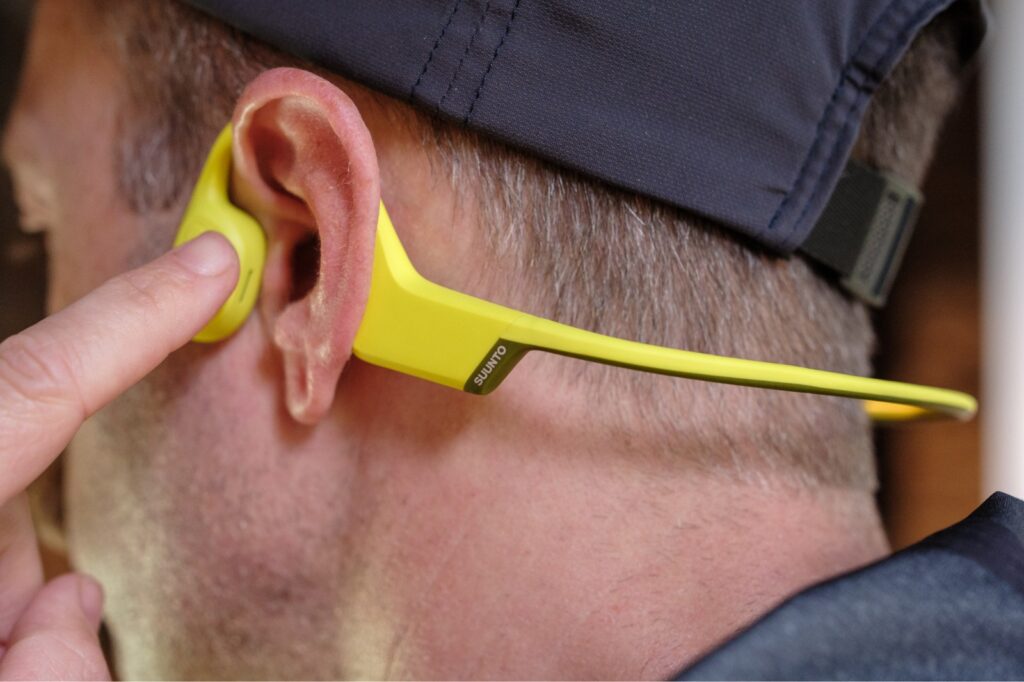
INTRODUCTION TO THE SUUNTO SONIC HEADPHONES RYAN: I’m a big believer in bone-conduction headphones. I made the switch from traditional earbuds to the Shokz OpenRun Pro a few years ago and haven’t looked back. Like many runners who pick up a pair of open-ear headphones, I did so for safety. At the time, I was living in a small town and running largely on open farm roads. It sounds like a perfectly safe place to be, with few turns and even fewer chances to accidentally run into someone. However, drivers saw it the same way. Cars would fly past me, going well over the speed limit, and in comfortable, noise canceling earbuds, I wouldn’t always hear them coming. One near miss too many, and I decided it was time to try something different. Well, now Suunto has decided it’s time for something different, too. The company is primarily known for its line of GPS watches that challenge offerings from both Garmin and Coros, but now it’s trying to encroach on Shokz’s territory. It just launched the Suunto Sonic and Suunto Wing, and I’m here to check out the former. I’ll save most of my comparisons to the Shokz OpenRun Pro for later in the review, but it’s impossible to ignore the similarities. I guess when a design works, it works. The Suunto Sonic uses a very similar wraparound design to the OpenRun Pro, with two main “earbuds” that loop over the top of your ears. They have a multifunction button on the left and volume controls on the right, with a charging connector tucked right behind. Oh, and the silicone and titanium alloy headset is one size fits all, so don’t worry about the sizing. I haven’t had any issues with the fit of the Sonic, though the band is a little more generous than that of the OpenRun Pro, so you might have to fiddle with it to get just the right positioning. Suunto’s color options are different, too, with either Black or Lime to choose from. Anyway, let’s get to some of the more important details. HOW DO THE SUUNTO SONIC HEADPHONES WORK? HOW DO THEY SOUND? RYAN: Alright, so the first thing you probably noticed is that the Suunto Sonic aren’t like other headphones. They don’t have soft tips that go into your ear in order to block out external sounds, nor do they have a small charging case that you return them to in between listening sessions. Instead, Suunto’s wraparound Sonic headphones use something called bone-conduction technology to play your music and podcasts while keeping your ears open to the world around you. If you’re not familiar with how bone conduction works, let’s just say that it’s a little bit different from your traditional earbud. Whereas something like Apple’s AirPods uses air conduction to send sound waves through the air and into your eardrum, the Suunto Sonic (and others) use a wide, flat pad that sits on your cheekbone. Then, the sound waves vibrate directly into the bone they’re in contact with to skip the eardrum entirely and instead flow right into your inner ear. Fun fact — bone conduction is actually how Beethoven kept composing music after he lost his hearing. He clenched his conducting baton between his teeth and set it to his piano to feel the notes as he played them. Anyway, your brain still processes the soundwaves the same way through the cochlea, completely ignoring the fact that they never passed through your eardrum and leaving it open to process other sounds. With our little anatomy lesson out of the way, you’re probably wondering how well the Suunto Sonic headphones actually sound. Well, let’s start with a reminder that the open-ear design doesn’t isolate your eardrum from ambient sounds, so you can’t expect the same audio quality that you might with a pair of noise canceling earbuds. But, again, this is by design so that you can both hear your music and hear the world around you. Safety first. Anyway, I think the sound quality on the Suunto Sonic is actually pretty good compared to other bone-conduction headphones in its price range. You’ll probably have to fiddle with the pads a little bit to get them properly positioned next to your ear, but once you do, you should have no problems keeping them in place. I typically kept mine at around 50% of my iPhone’s maximum Bluetooth volume and found that I could hear both lyrics and instruments clearly while streaming Spotify. That said, I’ve found that most bone-conduction headphones fare just a bit better with spoken voices and podcasts than they do with music, at least when listening outdoors. There’s something about the sharpness of the human voice that comes across much cleaner than pianos or guitars. Oh, and you can also pair the Suunto Sonic to Suunto’s official app, which gives you just a little bit more control over your playback. Specifically, it allows you to pair to two devices at one via Bluetooth Multipoint and switch between Normal and Outdoors sound profiles. HOW DURABLE ARE THE SUUNTO SONIC HEADPHONES? CAN YOU SWIM WITH THEM? RYAN: Another very important feature on any pair of headphones that you plan to run or work out in is how durable they are. After all, sweat is pretty gross and tends to gunk up any old pair of headphones (or hats, or running shirts, or, well, anything else) it comes in contact with. You may or may not be familiar with the IP scale for water and dust resistance, but it’s important when it comes to understanding just how tough the Suunto Sonic headphones are. Put simply, products are given a rating for water and dust resistance on a two-digit scale, with the first representing dust ingress on a scale from 0-6 and the second covering water on a scale from 0-9. Suunto’s Sonic headphones come with an IP55 rating, which means that it’s almost fully sealed from dust and protected from jets of water at
The Ultimate Guide to Choosing the Right Footwear for Your Sport
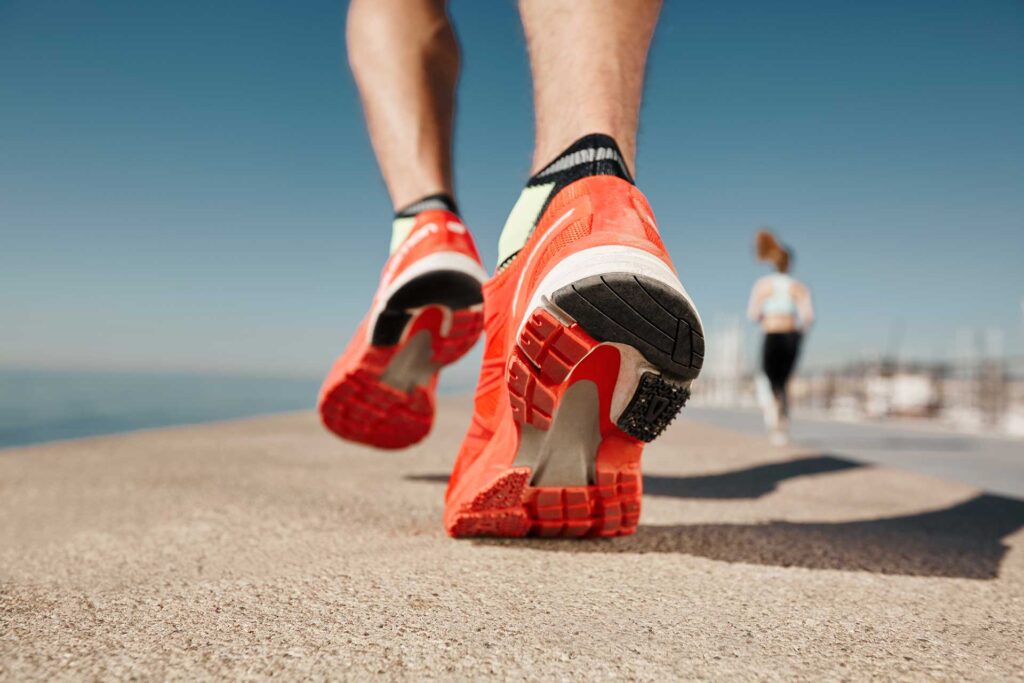
Choosing the right footwear is crucial for any athlete or fitness enthusiast. The right shoes can enhance performance, prevent injuries, and provide comfort during workouts. However, with so many options available for various sports and activities, it can be overwhelming to know where to start. This ultimate guide will help you navigate the world of sports footwear, offering insights into selecting the best shoes for your specific needs. 1. Understanding Your Sport Before diving into the specifics of footwear, it’s essential to consider the type of activity you’ll be engaging in. Different sports require different shoe features to optimize performance and protect your feet. Here are some common sports and their footwear requirements: Running Key Features: Basketball Key Features: Soccer Key Features: Cross-Training Key Features: Hiking Key Features: 2. Assessing Your Foot Type Understanding your foot type is crucial in selecting the right shoes. Here are the three main foot types and their characteristics: Flat Feet High Arches Neutral Arches 3. Trying On Shoes When trying on shoes, follow these tips to ensure a proper fit: 1. Measure Your Feet Feet can change size over time, so it’s essential to measure them regularly. Measure both length and width, as one foot may be larger than the other. 2. Try Shoes on at the End of the Day Feet tend to swell throughout the day, so trying on shoes in the evening can help you find a comfortable fit. 3. Wear Appropriate Socks Wear the type of socks you plan to use during your activity when trying on shoes. This can affect the fit and comfort. 4. Test for Comfort Walk or jog around the store to assess comfort. Ensure there’s enough room in the toe box, and check that the heel doesn’t slip. 5. Consider the Break-In Period Some shoes may require a break-in period. However, they should still feel comfortable from the start. If a shoe feels uncomfortable or causes pain, it may not be the right fit. 4. Understanding Shoe Technology Many brands incorporate advanced technologies into their footwear to enhance comfort and performance. Here are some common technologies to look for: Cushioning Systems Stability Features Traction Patterns 5. Maintenance and Care To extend the lifespan of your sports footwear, consider these maintenance tips: 1. Clean Regularly Remove dirt and mud after each use. Use a damp cloth or sponge to clean the surface, and avoid machine washing unless the manufacturer recommends it. 2. Allow for Drying After use, allow shoes to air dry at room temperature. Avoid direct sunlight or heat sources, as they can damage the materials. 3. Rotate Shoes If you engage in regular physical activity, consider rotating between two pairs of shoes. This gives each pair time to recover between workouts. 4. Replace When Necessary Keep an eye on your shoes for signs of wear and tear, such as uneven tread or reduced cushioning. As a general rule, running shoes should be replaced every 300 to 500 miles, while other sports shoes may vary based on usage. 6. Conclusion Choosing the right footwear is an essential aspect of optimizing performance and comfort in any sport. By understanding the specific requirements for your activity, assessing your foot type, and trying on various options, you can find the ideal shoes for your needs. Additionally, staying informed about the latest footwear technologies and caring for your shoes can help ensure they last, allowing you to focus on achieving your athletic goals. Whether you’re a seasoned athlete or just starting your fitness journey, investing in the right footwear is a step toward success. Happy training!
Hoka Skyward X Review: Stepping Through the Stratosphere

INTRODUCTION TO THE HOKA SKYWARD X THOMAS: It’s 2011 and my throat is dry. The landscape is dust and rocks; if it weren’t for the cactus and scrub brush, you could mistake the place for Mars. Two local Arizona runners invited my Ragnar team for a post-flight jog through the desert. Those same runners were wearing the most enormous shoes I had ever seen. “What are those??” I asked. “Hoka One One Mafate.” Was that Italian? Nothing that came out of the man’s mouth made sense to me. At that time, 20 mm of stack was the norm, if not high. The shoes looked ridiculous to me and I had no interest in them at the time. It took me nearly three more years before I would try a Hoka. What seemed ginormous at the time is now the standard stack height when it comes to running shoes. Ironically enough, we’ve seen those lower stack brands transcend Hoka when it comes to platform-style trainers– shoes like the Adidas Prime X 2 Strung, Asics Superblast, New Balance SC Trainer, Mizuno Wave Rebellion Pro, and more. So it was high time for Hoka to throw their weight around with a shoe whose stack height matched the history of the brand. Enter the Hoka Skyward X, a true embodiment of Hoka big. MEAGHAN: “When are we getting those?” That was my first question when I saw the Skyward X leaked on Instagram. I’m a sucker for high stack and a good time, which is exactly what the Hoka Skyward X screams. How can you not be intrigued? Built on over 45 mm of stack, a suspension system with a carbon fiber plate, and a mix of Peba and supercritical EVA foam in the midsole, this shoe has everything interesting in running right now. Finished off with a flat knit upper, traditional Hoka rocker shape and a rubber outsole, this trainer looks like a Hoka, but feels like an upgrade. Does all this fun tech justify the $225 price tag? Let’s talk about it. CHAD: After years of slipping behind the big players like Nike, Adidas, Saucony, etc., Hoka has stepped up its game as of late and dropped some incredibly solid shoes in every category. The Clifton 9 was a big hit as a daily trainer (as usual), the Rocket X 2 was one of the crew’s favorite race day shoes of 2023, and recently the Cielo X1 staked its claim as one of the most fun shoes we’ve ever worn. Other than the widely maligned Arahi 7 (quite possibly the worst shoe of 2024), Hoka is close to entering “they can’t miss” status with every release. I almost expect to hear “HE’S ON FIRE” when I open the box and lace up a new pair of Hokas, like I’m in the OG NBA Jam arcade game. What shoe is “heating up” now? The Skyward X, the max to the max cushioned super trainer. I, like Meg, saw this popping up on Instagram and Reddit before its release and my interest was piqued immediately. The look reminded me of the New Balance SC Trainer v1 in terms of stack height, which I’ll admit was a shoe I never ran in because I was terrified of the height. Since then I have run in other high stack shoes (Adidas Prime X Strung 2 and the Asics Superblast), so I’ve sort of put those fears to rest. Meg hit on the specs of the Skyward X, so let’s get to the good stuff. WHAT WE LIKE ABOUT THE HOKA SKYWARD X THOMAS: The cushioning in the Skyward X is otherworldly. Upon landing, you feel the Peba give and soften the effects of gravity. The plate stabilizes the impact and is paired perfectly with the firmer carrier foam. Here comes the magic. Like a trampoline, the Peba expands and returns the energy to your stride. It is a near-perfect blend of soft and responsive cushioning. There is plenty of rubber on the outsole, and it is holding up as well as you would expect. The upper construction is nothing special until you realize it cradles your foot securely over the massive midsole. The laces loop through a system like a sling that goes down both sides of the upper, creating a hammock for your midfoot. You are locked in very comfortably between that and a reinforced heel counter. Breathability is moderate to warm. My size 10.5 fits true to size. Between the sturdy upper, two performance foams, the carbon plate, and a fair amount of rubber on the outsole, the Skyward X should last well over the 300-500 mile mark, which is good considering the price tag. MEAGHAN: As you probably guessed from my intro, I couldn’t wait to lace this one up. Between a layer of Peba beneath the foot, a carbon fiber plate and 46 mm of stack, it felt like this shoe was built for me. The step-in feel is plush and comfortable and the shoes fit true to size. There is ample room in the forefoot and toe box and the simple, stretchy laces keep the foot locked down well. I never had any issues with rubbing or hot spots and shoes are just generally very comfortable. Out on the roads, this shoe comes to life. The best way to describe the sensation is: fun. It feels like running on mini trampolines; there is absolutely no ground feel (here for it), just a fun, springy sensation underfoot. And while you get the benefit of being a few inches taller with all that stack, because of its wide build and deep foot frame, the shoes feel quite stable. CHAD: Where do I even start? This shoe is an engineering marvel, like the Eiffel Tower or the Hoover Dam. The Skyward X has 48 mm of soft and bouncy foam with a “suspension midsole plate” sandwiched in the middle. The rebound from the Peba based foam underfoot, the stabilization from the plate, and the intense rocker provide for a smooth ride that can best be described as fun. Meg’s analogies to mini-trampolines is
Anthony Edwards’ adidas AE 1 Sports a Vibrant “MX Fuchsia” Colorway

adidas Basketball continues to roll out new colorway options for Anthony Edwards’ first signature shoe, the adidas AE 1. Having already released in a “With Love” colorway shouting out to Atlanta, the adidas AE 1 will now drop in a vibrant “MX Fuchia” color scheme boasting aura black, lucid pink, and lucid lemo hues. The pair is crafted from a black knit textile upper boasting a multi-colored TPU support cage with breathable perforation and a unique honeycomb pattern. Edwards’ inaugural silhouette is then finished with his initials in fushia pink on the woven tongue and matching Three Stripes branding on the back heel. Below is a Jet Boost and Lightstrike-equipped midsole for a feather-like feel and responsive energy return. Fans can purchase the adidas AE 1 “MX Fushia” when the pair releases in August 2024 via adidas.com and select retailers for $120. For more drops, check out our Sneaker Release Dates Calendar. adidas AE 1 “MX Fuchsia” Colorway: Aura Black/Lucid Pink-Lucid LemoStyle #: IG6610Release Date: August 2024Price: $120
How to Care for Your Sports Apparel: Tips for Longevity and Performance
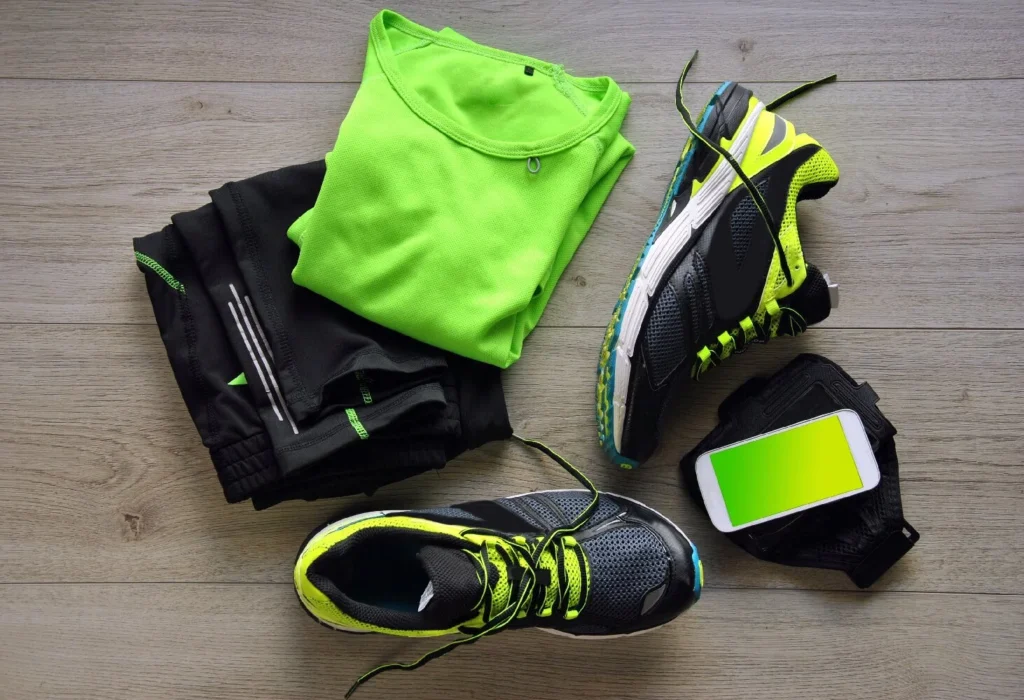
Investing in high-quality sports apparel is essential for optimal performance and comfort during workouts. However, ensuring that your gear lasts and maintains its functionality requires proper care and maintenance. This guide will provide you with essential tips on how to care for different types of sports apparel, focusing on techniques that enhance longevity, preserve performance features, and keep your gear looking great. 1. Understanding the Fabrics Before diving into care instructions, it’s important to understand the types of fabrics commonly used in sports apparel. Each material has unique care requirements: 1.1 Polyester 1.2 Nylon 1.3 Spandex/Lycra 1.4 Merino Wool 1.5 Cotton 2. General Washing Tips Regardless of the fabric, here are some general washing tips to follow: 2.1 Read Care Labels Always check the care labels for specific instructions provided by the manufacturer. This will help you avoid damaging your apparel. 2.2 Sort Your Laundry Separate your sports apparel from regular laundry, especially items with zippers or hooks that may snag delicate fabrics. Wash similar colors together to prevent color bleeding. 2.3 Use Gentle Detergents Opt for mild, eco-friendly detergents free from harsh chemicals, bleach, or fabric softeners. These can degrade the performance of moisture-wicking and technical fabrics. 2.4 Avoid Overloading the Washing Machine Overloading can prevent thorough cleaning and lead to excessive friction, which can damage the fabric. Allow enough space for clothes to move freely. 2.5 Use Cold Water Washing in cold water helps retain the color and integrity of the fabric while also saving energy. Hot water can cause shrinkage and damage to elastic fibers. 3. Drying Techniques How you dry your sports apparel can significantly impact its longevity. Here are some effective drying techniques: 3.1 Air Drying 3.2 Tumble Drying 4. Storing Your Sports Apparel Proper storage of your sportswear is crucial for maintaining its shape and functionality. Here are some tips for effective storage: 4.1 Keep It Clean Always ensure that your sports apparel is clean and dry before storing it to prevent odors and mildew. 4.2 Fold or Hang? 4.3 Avoid Compression Do not compress or tightly pack your sportswear in drawers or bins, as this can lead to creasing and damage to the fibers. 4.4 Use Breathable Storage Options Store your apparel in breathable fabric bags or bins to prevent moisture buildup. Avoid plastic bags, which can trap moisture and lead to mildew. 5. Specialized Care for Performance Gear Certain types of sports apparel, such as compression wear and moisture-wicking fabrics, may require additional care: 5.1 Compression Gear 5.2 Moisture-Wicking Fabrics 5.3 Waterproof or Water-Resistant Gear 6. Repairing Minor Damage Taking care of small damages can extend the life of your sports apparel: 6.1 Patching Holes For small holes or tears, consider using fabric patches or iron-on patches to prevent further damage. 6.2 Replacing Elastic Bands If elastic bands in waistbands or cuffs lose their stretch, consult a tailor or attempt to replace them yourself. 6.3 Removing Stains Treat stains promptly with appropriate stain removers before washing. Avoid using bleach, as it can damage technical fabrics. 7. Conclusion Caring for your sports apparel is essential for maximizing its lifespan and maintaining performance. By understanding the specific care requirements for different fabrics, following proper washing and drying techniques, and storing your gear correctly, you can keep your clothing looking great and functioning well for years to come. Investing time in proper maintenance not only saves money but also contributes to a more sustainable approach to sportswear consumption. With these tips, you can focus on what matters most—achieving your fitness goals and enjoying your favorite activities. Happy training!
Rabbit Spring 2024 Trail Apparel Review: Pockets Galore
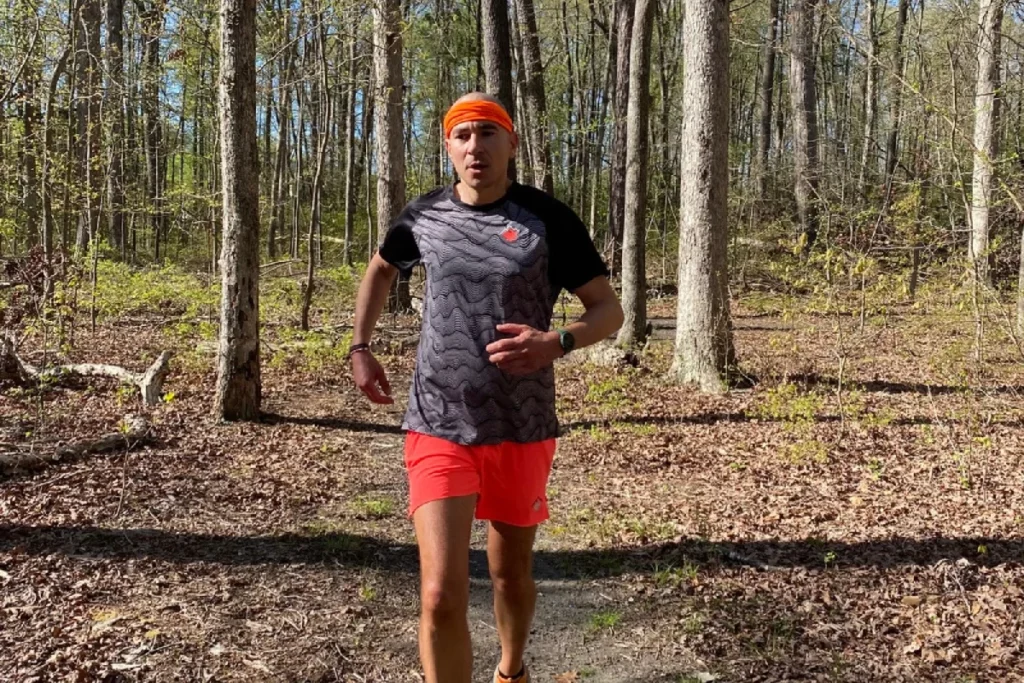
INTRODUCTION TO THE RABBIT SPRING 2024 TRAIL COLLECTION JOHN: My running clothes stink. They literally smell from years of abuse and torture. I’m absolutely grateful to be on this review because I need to toss out all my clothes that have been on too many adventures. Also, I’ve never reviewed high-end trail running clothes, so this is very exciting! Like many confused, lost, and poor souls out there, I don’t prioritize new running clothes. I just hope my girlfriend, Mom, or the Easter Bunny gets me some, and I use all my resources on bibs, tech, and shoes. I want to change, but I can’t beat it! I’m trying! So, for people like me holding on to gear out of love, saving cash, or memories, the question is why? Why would we get rid of our beloved, precious, but disgusting running gear? Well, let me tell you that since I received this fresh Rabbit Trail gear, I’ve been pretty much living in it exclusively (to test it out, of course). For me, to fully embrace new running gear is like what Garth said in Wayne’s World: “It’s like a new pair of underwear; at first, they’re restrictive, but then after a while, they become a part of you.” I feel like rabbits don’t get enough love in the animal kingdom. They’re ferocious in Monty Python; Roger Rabbit somehow married Jessica, and they can be super diabolical, like in Donnie Darko and Silent Hill. I’ve been lucky enough to get Rabbit clothes here and there over the years, and I know they’re good, but I really had no idea what the newer gear brought to the table in terms of functionality. The gear also looks really cool, so like after the race or social run you won’t feel like a total dork in your 2017 5k shirt that’s permanently stained and stanky. Can Rabbit help me change my dirtbag ways? Let’s find out. MELISSA: Local brand? Check. Woman founded and owned? Check. Quality product? Check! Not only is Rabbit a brand that I know well as a Santa Barbara local, but it’s one that has never disappointed me. I mean, I have tops and shorts that are still going strong nearly 10 years after purchasing them. I’ve mentioned in other reviews how much of a fan of their EZ apparel I am. There’s rarely a day that you’ll not see me wearing at least one item from that line. Well, in more recent years, Rabbit has expanded its focus and thrown its hat in the trail ring, and the result has been pretty impressive. Let’s explore why. RABBIT UPF DEFLECTOR 2.0 JOHN: This lightweight UPF Deflector is packed with goodies, almost to the point that it spoils you. It’s vented and has thumb holes and an opening to see your watch… on both sides! No pulling up your sleeve to see you drifted to a 13-minute pace! I know it’s simple but mind-blowingly awesome to me. The hoody has a UPF Rating of 50, and the hood itself has a brim and design that gives you additional protection from the sun for your face, neck, and ears. The cuffs cover your hands, giving you additional protection from the sun. There’s also a zippered pocket in the back of the hoody to stash stuff. This hoody actually may be too good to be true because its features already have my girlfriend eying it for a quick snack and grab… beware the snatchers on this one, folks! MELISSA: The UPF Deflector holds some sentimental value for me. I wore the original version of this long-sleeve top to Javelina 100 in 2021, my first 100 miler post-hip surgery. So this race and this top give me all the warm and fuzzy feels. For those not familiar with Javelina, it takes place in the Arizona desert. It’s completely exposed and has the potential to heat up. I had originally planned to wear the top only through the hotter, sunny parts of the day but ultimately ended up keeping it on for the entirety of the race because it transitioned easily from sun protection to an extra layer for warmth for the evening. Version 2.0 has some pretty major updates. The UPF 50 material has shifted to something that is softer and stretchier. The watch openings in both sleeves, perforations around the armpit for ventilation, and zippered side pocket are also an addition to version 2.0. Finally, the top is offered in a Fiery Coral for women and Woodland Gray for men. I can really appreciate the added stretchiness to this top. It makes it easier for it to be worn over something else. It also makes for easier movement and less rubbing, and we all know that rubbing eventually leads to chafing. Based on a couple of wears, I feel pretty confident in its ability to breathe and ventilate. Like version one, this top has sleeve extensions to help protect the hands and a generously sized hood that protects your neck and ears and sits well over a hat. Overall, I think this is a wonderfully designed sun top that will come in handy as I train through the summer. It’s perfect for summiting peaks and for running in the desert, both of which I’m planning on doing this year, so don’t be surprised when you see me rocking bright coral out there. PRICE: $70 RABBIT SHREDDERS AND SMASHEMS 5-INCH SHORTS JOHN: The Shedders 5-inch shorts basically have a built-in running belt that stashes lots of stuff with four pockets. Another amazingly cool feature is that there are two elastic loops to hold trekking poles. I can’t stress how much I love this and I truly feel like this right here is why you need to ditch old gear and utilize the new gear Rabbit is dropping. Pretty much every aspect of these shorts delivers. The drawstring is tough and won’t budge, and they’re made from recycled materials. The nylon in the liner and waistband keeps you cool and controls
The Impact of Sports Apparel on Athletic Performance: A Deep Dive

In the world of sports and fitness, athletes often seek every possible advantage to enhance their performance, whether through training regimens, nutrition, or the latest in sports technology. One critical yet sometimes overlooked factor is sports apparel. The right clothing can significantly affect an athlete’s performance, comfort, and overall experience during training and competition. This post will explore how sports apparel impacts athletic performance, the technology behind modern fabrics, and tips for selecting the best gear for your specific needs. 1. The Role of Sports Apparel in Performance 1.1 Comfort and Mobility Comfort is paramount for athletes. Ill-fitting or restrictive clothing can hinder mobility and distract from performance. Sports apparel designed for specific activities often includes features that enhance comfort, such as: 1.2 Temperature Regulation Maintaining the right body temperature is crucial for optimal performance. Clothing designed with temperature regulation in mind can help athletes stay cool or warm as needed. Features include: 1.3 Reduced Friction and Chafing Chafing can be a significant concern during prolonged physical activity. High-quality sports apparel often includes flat seams, seamless construction, and moisture-wicking fabrics to minimize friction. This allows athletes to focus on their performance rather than discomfort. 2. The Technology Behind Sports Apparel Modern sports apparel incorporates advanced technologies to enhance functionality and performance. Here are some key innovations: 2.1 Moisture-Wicking Fabrics Moisture-wicking fabrics are engineered to pull sweat away from the skin and promote evaporation. This technology helps regulate body temperature and keeps athletes comfortable during physical exertion. Common materials include: 2.2 Compression Technology Compression garments are designed to fit tightly against the body, providing support and stability to muscles. Benefits of compression apparel include: 2.3 Smart Fabrics Some sports apparel incorporates smart technology to monitor performance metrics. These innovations can include: 3. Psychological Impact of Sports Apparel The psychological aspect of sports apparel should not be underestimated. Wearing high-quality, stylish, and well-fitting gear can have a significant impact on an athlete’s mindset and confidence. Here’s how: 3.1 Boosting Confidence Athletes often feel more confident when wearing gear that fits well and looks good. This boost in self-esteem can translate into improved performance, as athletes are more likely to push themselves when they feel good about their appearance. 3.2 Creating a Competitive Edge The perception of wearing cutting-edge technology can enhance an athlete’s confidence in their gear’s performance capabilities. This belief can lead to improved focus and motivation during training and competition. 3.3 Establishing Identity Sports apparel often reflects an athlete’s personal style and identity. Wearing gear that resonates with their personality can create a sense of belonging and connection to their sport. 4. Choosing the Right Sports Apparel Selecting the right sports apparel is essential for enhancing performance. Here are some tips to consider: 4.1 Understand Your Sport Different sports have unique requirements, so it’s essential to choose apparel designed specifically for your activity. For example: 4.2 Consider Fit and Comfort Proper fit is crucial for performance. Ensure that your apparel is snug but not restrictive. Try on different styles and sizes to find what works best for your body type and activity level. 4.3 Pay Attention to Features Look for specific features that enhance performance, such as: 4.4 Invest in Quality While it might be tempting to go for cheaper options, investing in high-quality sports apparel can pay off in the long run. Quality gear often lasts longer, performs better, and provides superior comfort. 5. Conclusion The impact of sports apparel on athletic performance is significant, affecting everything from comfort and mobility to psychological factors like confidence and focus. Understanding the technologies behind modern fabrics and selecting the right gear tailored to your specific sport can enhance your training and competition experience. By prioritizing comfort, fit, and quality, athletes can ensure they are equipped to perform at their best. Whether you’re a seasoned athlete or just starting your fitness journey, the right sports apparel can make all the difference. Embrace the power of performance-enhancing clothing and take your athletic endeavors to new heights!
adidas Celebrates the “USC Trojans” With Special Samba
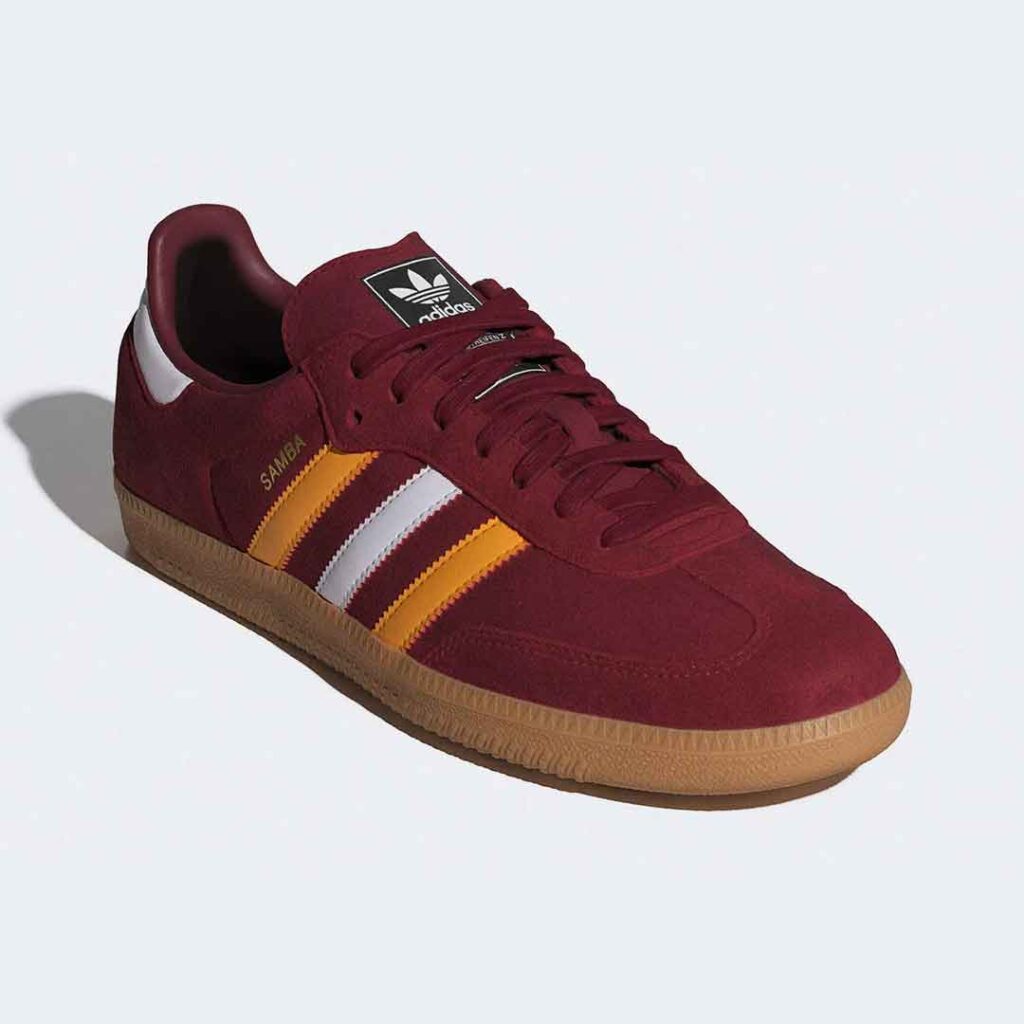
The adidas Samba “USC Trojans” celebrates the storied legacy of the University of Southern California’s athletic program. This special edition of the classic Samba silhouette pays homage to the school’s iconic colors and rich history in collegiate sports. The pair’s suede construction features a predominantly cardinal red upper with gold accents, representing USC’s official colors, on the signature Three Stripe branding. Built with premium materials and craftsmanship, the adidas Samba “USC Trojans” offers both style and performance. Whether worn on game days to support the Trojans or as a stylish statement off the field, this sneaker combines heritage design with modern flair. With its timeless silhouette and distinctive USC branding, the Samba “USC Trojans” pays tribute to the university’s athletic tradition while providing fans and sneaker enthusiasts with a standout addition to their collection. So far no release notes for the adidas Samba “USC Trojans” have been released, but the pair will drop sometime in 2024 via adidas.com. adidas Samba “USC Trojans” Style #: IG1825Release Date: 2024
Camelbak Apex Pro Vest Review: I’m Mary Poppins, Y’all
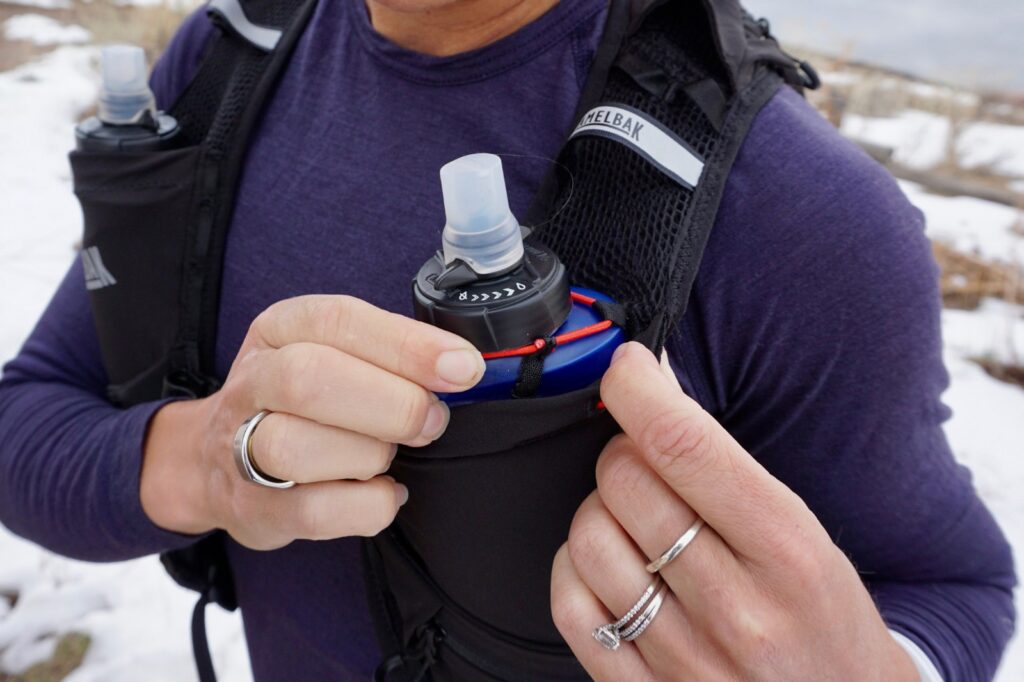
INTRODUCTION TO THE CAMELBAK APEX PRO VEST TAYLOR: It’s that time of year when the warmer temps and bustling birds get you daydreaming about long days in the woods. You know, the runs when your body and mind ebb and flow with the trail. When putting one foot in front of the other is your only aim, and stopping is on the other end of your cerebral spectrum. Peace of mind goes a long way when you’re deep into such days. Having the right gear can be what separates your tranquil trodding from questioning your desires. Camelbak hopes to keep runners in nirvana with the Apex Pro Run vest. It’s more than the run-of-the-mill hydration pack — this particular pack has had some serious amounts of testing and tech put into it. Besides the well-thought-out pockets and fit, two key components separate the Apex Pro Run Vest from others on the market. One of those is the recently popular pole quiver. As of late, they’re hotter than Uncle Jim’s flapjacks — everyone wants one and this pack has it. What I was actually more curious about was the use of RECCO technology in a pack. Excuse me for getting morbid, but I happen to live in an area where far too many accidents happen, and death is often the result. As much as you tell yourself, “That won’t be me,” I’d be remiss to think that I’m immune. RECCO is that if-and-when measure that can be a life-saving difference. Read on for all the deets. REESE: The Apex Pro Run Vest was crafted by athletes, for athletes, drawing on insights and enduring miles of testing to ensure it can withstand the toughest races and conditions. I’m not talking about your average ultra or even modestly hard 100-mile race. I’m talking Hardrock 100, UTMB, Cocodona 250, etc. Offered in four sizes, its apparel-like fit and four-way stretch materials deliver an optimized feel for a wide range of runners. The Apex Pro Run Vest features RECCO technology for searchability by rescue professionals. It’s also practically limitless when it comes to storage. On top of the many pockets, the tiny whistle, and the numerous bungy cords for external gear storage, the vest also has a deployable, removable trekking pole quiver. It keeps essentials secure and dry with a water-resistant zippered pocket and stretch overflow pockets while also providing ample space for refueling and hydration needs. The Apex Pro comes equipped with two 17 oz. Quick Stow Flasks, but you’ll have to provide your own hydration reservoir (up to 2L capacity). HOW WE TESTED TAYLOR: I almost never bring more than a waist belt and phone on a run under two hours. To put the Camelbak Apex Pro Vest to the test, I brought it out on wintery peak bagging missions and long runs when I needed more than the typical load. We’re talking jackets, nutrition, full bottles, crampons, and the like. REESE: I tested the Apex Pro Run Vest on a few runs, ranging from nine to 13 miles. I carried a jacket in the pack and stowed my keys, snacks, and cell phone. I alternated between using both flasks and just one. However, before I could test out the pole quiver, a front buckle fell off, making it impossible to run with anymore. I wish I had tested that feature out, as well as tested out if it was a heat sink in hot temps or chafed while just wearing a sports bra as a top. Alas. FIT AND COMFORT TAYLOR: Sizing was a little bit of a concern for me. According to my chest size, I fell into a small, even though I am a true medium in just about every piece of clothing and gear across other brands. I went with it, though. Initially, I thought I made a mistake as the vest is more compact, but it turns out Camelbak’s sizing is pretty accurate. I could have gone with a medium and had a bit of extra material to work with or gone with the small and fine-tuned the fit at the ends of the rope. If you happen to fall between a couple of sizes, either has the adjustability to satisfy your needs. The Apex Pro Vest made it simple to adjust across the chest. A hook and loop system along the shoulder straps allowed for moving buckles up and down as needed. What I liked best about this system is that it was simple and it stayed put, unlike the rail system that many other vests rely on. After that, the four-way stretch airy mesh and broader pocketed straps did their job of settling in around my body. I didn’t feel any constriction after adjusting to my liking, nor was there any bagginess. A hug is a very appropriate descriptor. This vest rides on the upper back, giving a true zero-bounce feeling, even with a fully loaded pack. There are very few vests on the market that have found that seemingly magical balance of being able to carry a lot without hindering performance, and the Camelbak Apex Pro Vest is one of them. REESE: Clocking in at five-foot-two, I’m not a tall person. I’ve always struggled to find a pack that fits me well. To set the scene, an XS in The North Face’s Summit Series Race Day Vest 8 and an XS in the Arc’teryx Norvan 7 vest mostly fit, but as soon as the bottles get low, the packs bounce around a lot. The Apex Pro pack isn’t as minimal as those vests, covering much of my torso, which is good and bad. Due to the size of the pack, it says in place. But it also comes down to the middle of my lower back and the width of the shoulder straps is a bit oversized. However, while testing, I was pleasantly surprised by how comfortable it felt. I had to cinch down the chest straps to the absolute max for it to work for me. It’s a relatively
The Future of Sports Apparel: Innovations Shaping Athletic Wear
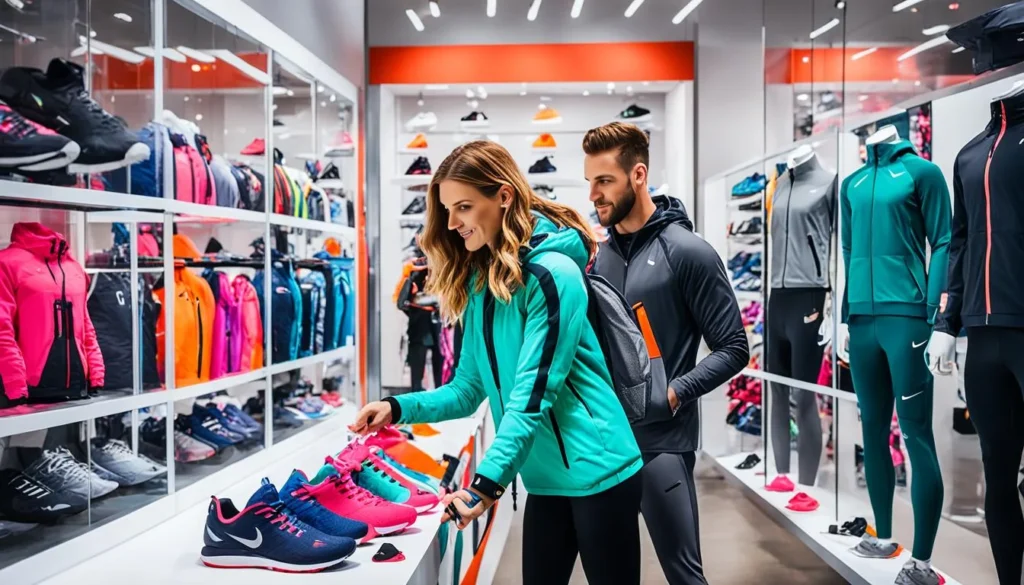
As the sports industry continues to evolve, so does the technology and design of sports apparel. Athletes and fitness enthusiasts are increasingly seeking gear that not only enhances performance but also reflects sustainability, personalization, and style. In this post, we will explore the key innovations shaping the future of sports apparel, including advancements in materials, smart technology, sustainability efforts, and trends that are set to redefine how we think about athletic wear. 1. Advanced Materials and Fabrics 1.1 Smart Fabrics One of the most exciting developments in sports apparel is the rise of smart fabrics. These innovative materials can monitor an athlete’s performance and physiological responses in real time. Key features include: 1.2 Sustainable Fabrics The demand for sustainability is reshaping the materials used in sports apparel. Brands are increasingly turning to eco-friendly fabrics, which include: 2. Customization and Personalization 2.1 Tailored Fit As athletes seek gear that fits their unique body shapes and preferences, customization options are becoming more prevalent. Brands are using technologies like 3D body scanning to create tailored athletic wear that enhances comfort and performance. Customized options may include: 2.2 Performance Tracking With the integration of technology into apparel, athletes can receive personalized feedback based on their performance. Wearable devices and smart fabrics can sync data with mobile applications, providing insights that help athletes adjust their training regimens. This level of personalization allows for: 3. Sustainability in Sports Apparel 3.1 Eco-Friendly Manufacturing Sustainability is a driving force behind many innovations in sports apparel. Brands are adopting eco-friendly manufacturing processes that minimize waste and reduce environmental impact. Key practices include: 3.2 Ethical Labor Practices Consumers are increasingly concerned about the ethical implications of their purchases. Many sports apparel brands are committing to fair labor practices, ensuring that workers are paid fair wages and work in safe conditions. Transparency in supply chains is becoming a crucial aspect of brand reputation. 4. Trends Influencing the Future of Sports Apparel 4.1 Athleisure’s Continued Rise The athleisure trend shows no signs of slowing down. The blending of athletic wear with everyday fashion is leading to versatile designs that can be worn both in and out of the gym. This trend is characterized by: 4.2 Gender-Neutral Options The push for inclusivity is reshaping sports apparel, with many brands offering gender-neutral designs that cater to a diverse audience. This trend reflects a growing recognition of the need for clothing that transcends traditional gender norms, featuring: 4.3 Tech Integration The integration of technology into sports apparel is becoming more sophisticated, with advancements that enhance performance and user experience. Innovations include: 5. The Role of Community and Feedback As brands innovate and introduce new products, they are increasingly relying on feedback from athletes and consumers. Engaging with the community allows brands to: 6. Conclusion The future of sports apparel is bright, with innovations in materials, technology, and design set to transform how athletes experience their gear. As brands continue to prioritize sustainability, personalization, and performance-enhancing features, consumers will benefit from a new era of athletic wear that not only meets their functional needs but also aligns with their values. Whether you’re a professional athlete or a fitness enthusiast, staying informed about these trends and innovations will help you make smarter choices in your sports apparel purchases, ultimately improving your performance and enjoyment of the activities you love. Embrace the future of sports apparel and take your athletic pursuits to new heights!
